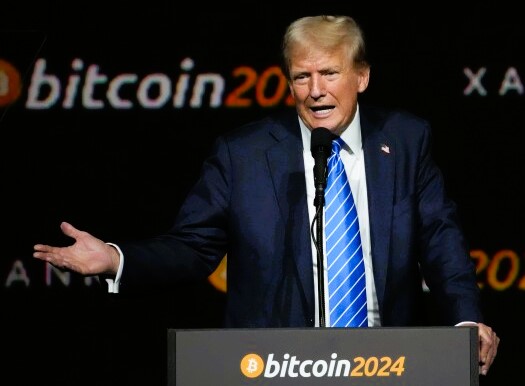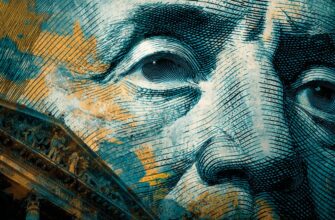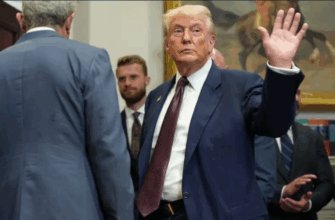Donald Trump’s return to the presidency in January 2025 has sent shockwaves through the cryptocurrency world. His tariff rollout on March 4 and hints at a U.S. Bitcoin reserve have triggered wild swings in Bitcoin’s price. Journalists at TheMors have analyzed these moves to understand their impact on Bitcoin, investors, and the broader economy. As of March 6, 2025, Bitcoin hovers around $85,000, down from a recent peak but up from a dip earlier this week. Here’s a deep dive into what’s happening and what might come next.
Tariffs Hit: Bitcoin Takes a Dive
On March 4, 2025, Trump launched his tariff plan, slapping 25% duties on imports from Canada and Mexico and raising tariffs on Chinese goods from 10% to 20%. Aimed at tackling drug trafficking and immigration, the move rattled financial markets. Bitcoin, trading at $105,000 before the announcement, plunged to $92,000 by the evening of March 5. Why? Investors dumped risky assets, fearing a trade war and rising inflation.
Canada fired back with $30 billion in tariffs on U.S. goods like oil and potatoes, while Mexico preps retaliation targeting American pork and soybeans. China added 15% duties on U.S. coal and farm products. This uncertainty hit Bitcoin hard—despite its “digital gold” label, it acted more like a volatile stock than a safe haven. Bloomberg Economics predicts a 15% drop in U.S. imports, which could shrink tariff revenue and squeeze the economy further.
Bitcoin Reserve Talk: A Sudden Boost
Just days earlier, on March 2, Trump dropped a bombshell on Truth Social: he wants the U.S. to build a strategic crypto reserve, starting with Bitcoin and including Ethereum, XRP, Solana, and Cardano. By March 3 morning, Bitcoin surged from $85,000 to $94,164—an 11% jump. Ethereum climbed 13% to $2,516, and the crypto market swelled by $300 billion in hours, per CoinGecko.
Trump’s vision? Use 200,000 seized Bitcoins as a base, with plans to buy more, positioning the U.S. as the “crypto capital of the world.” Details are thin—will this need Congressional approval, or can he tap the Treasury’s Stabilization Fund? Regardless, the market loved it. Investors saw a green light from a pro-crypto administration, reversing some tariff-related losses.
What’s Behind Bitcoin’s Rollercoaster?
Bitcoin’s price swings after Trump’s decisions stem from a mix of forces.
Tariffs and Uncertainty
The tariffs sparked inflation fears. The Federal Reserve of Atlanta projects a 0.8-1.6% price hike in everyday goods soon—gas could rise 10-20 cents a gallon, electronics and food by 10-15%. This pushed short-term Bitcoin sales as traders braced for economic turbulence.
Crypto-Friendly Signals
Trump’s reserve idea flipped the script. His pledge to ease regulations and back dollar-pegged stablecoins fueled optimism. Standard Chartered’s Geoff Kendrick even bets Bitcoin could hit $500,000 by the end of Trump’s term if this pans out. The promise of government-held Bitcoin as a hedge against inflation lit a fire under the market.
Market Mood Swings
Bitcoin thrives on sentiment. The tariff-driven drop gave way to a reserve-driven rally, showing how fast emotions shift. But volatility looms—if trade tensions grow, expect more ups and downs.
Expert Takes on the Trend
Analysts are split. James Butterfill of CoinShares calls the reserve a “symbolic move” more than a game-changer, noting, “Bitcoin’s unique compared to tech-driven coins like XRP or Solana.” Bitwise’s Peter Park, however, sees tariffs as a slow-burn win: a weaker dollar and higher inflation could make Bitcoin a go-to store of value.
Carol Alexander from the University of Sussex cautions that without clear rules, big traders might exploit the chaos, leaving retail investors burned. “It’s like soccer with no referee,” she says, pointing to risks if Trump loosens oversight too much.
Ripple Effects: U.S. and Beyond
The tariffs are already shifting gears. U.S. car prices could climb $3,000 per vehicle, per TD Economics, while construction slows as Canadian lumber costs soar. Households might lose $1,000 in buying power yearly, says Yale’s Budget Lab. Exporters—especially Midwest farmers—face pain from retaliation, echoing the $6 billion hit from China in 2018-2019.
A Bitcoin reserve, if launched, could cement U.S. leadership in crypto. It might spur banks like JPMorgan to roll out stablecoins, as White House aides suggest, and challenge China’s crypto crackdown. Globally, it’s a power play—nations watching might rethink their own digital asset strategies.
Where’s Bitcoin Headed?
Bitcoin’s path hinges on Trump’s next steps. If tariffs ease—say, Canada and Mexico cut border deals—the market could steady, pushing Bitcoin back toward $100,000. A full-blown trade war, especially if Europe joins in (Trump’s hinted at it), might drag it down to $70,000. The reserve adds a wildcard: if it launches in 2025, Bitcoin could top its November 2024 high of $109,000.
Possible Paths
- Upswing: Pro-crypto policies and tariff relief lift Bitcoin to $120,000 by year-end.
- Drop: Trade escalation and inflation fears pull it to $70,000.
- Sideways: Tariffs and reserve balance out, keeping it between $85,000-$95,000.
Conclusion: Bitcoin at a Crossroads
Trump’s decisions—tariffs on March 4 and the reserve tease—have Bitcoin on edge. A dip from trade fears flipped to a rally on crypto hopes, but the market’s still finding its footing. For investors, it’s a mix of risk and reward: some eye a bargain post-drop, as Robert Kiyosaki advises, while others bet on a long climb. One thing’s sure—U.S. policy is now a key player in crypto’s fate.
TheMors journalists are tracking this story live. Want more on Bitcoin’s price after Trump’s decisions or other market shifts? Visit TheMors – Breaking News for the latest breakdowns and insights. Subscribe and weigh in below!









